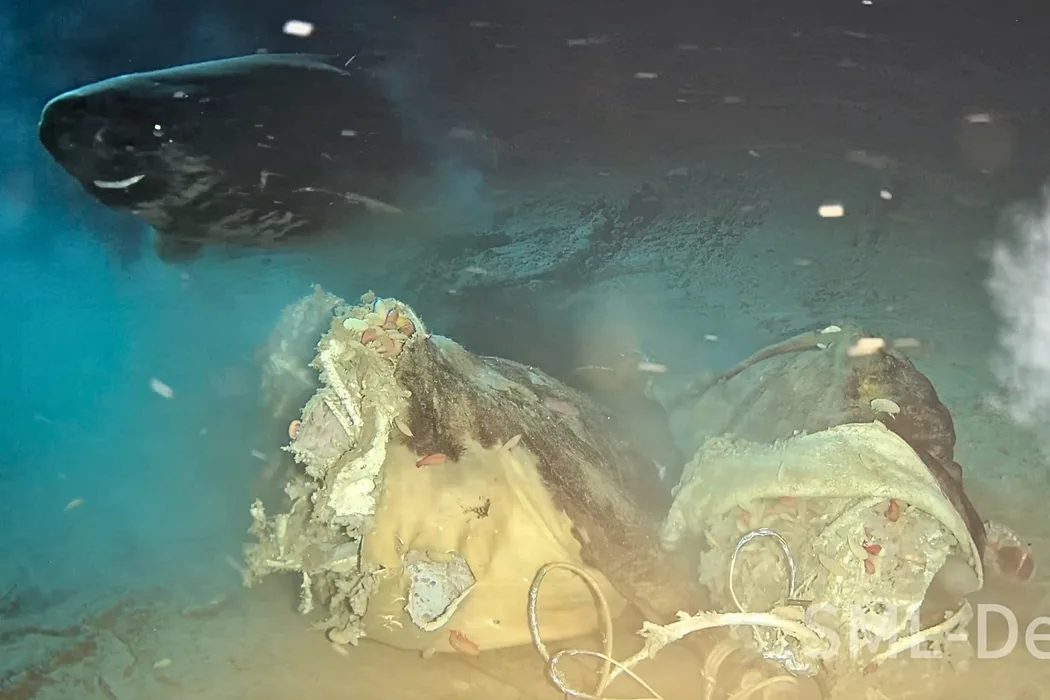Mysterious Giants of the Deep: Pacific Sleeper Sharks in the South China Sea
- Cuddlefish Divers

- Jul 5
- 3 min read
Updated: Jul 6
Introduction: The Hidden Titans of the Ocean
When we think of sharks, sleek hunters like the great white or hammerhead come to mind. But beneath the surface, hidden in the cold, inky depths of the ocean, lives a truly enigmatic creature: the Pacific sleeper shark (Somniosus pacificus). Rare, ghostly, and largely misunderstood, this deep-sea predator has long fascinated marine biologists and divers alike.
While sightings are uncommon, new studies and anecdotal evidence suggest that these elusive giants may be roaming the deeper regions of the South China Sea—an ocean basin known for its rich biodiversity and mysterious depths. Could these sharks be the deep-sea guardians of this critical marine region?
What is a Pacific Sleeper Shark?
The Pacific sleeper shark is a massive deep-water species, reaching lengths of up to 7 meters (23 feet), rivaling even the great white shark. But unlike its aggressive cousins, the sleeper shark is known for its slow, deliberate movements and nocturnal habits.
Scientific name: Somniosus pacificus
Family: Somniosidae (sleeper sharks)
Habitat: Cold, deep waters from the Arctic to temperate Pacific regions
Diet: Fish, squid, octopus, carrion (including dead whales and seals)
Notable traits: Silent ambush predator, low metabolism, extremely slow movement, nearly blind
Their name comes from their sluggish demeanor, but make no mistake—these sharks are efficient deep-sea predators, with powerful suction feeding and stealth attacks.
Sleeper Sharks in the South China Sea: Fact or Fiction?
Traditionally, Pacific sleeper sharks have been documented in cold northern Pacific waters, especially around Alaska, Japan, and the Bering Sea. However, recent ROV (remotely operated vehicle) footage, deep-sea trawling data, and anecdotal diver reports have hinted at the presence of Somniosus spp. in deeper zones of the South China Sea—especially in regions such as:
The Sulu-Sulawesi Basin
Palawan Trough
Luzon Strait
Southwest of the Spratly Islands
These locations have depths exceeding 3,000 meters, with water temperatures low enough to support deep-sea shark species. If sleeper sharks do reside here, they are likely venturing into mesopelagic and bathypelagic zones, well beyond recreational dive limits.
Why Are These Sharks So Rarely Seen?
The South China Sea, though well-studied on its surface, remains one of the most poorly explored deep-sea habitats in Southeast Asia. Deep-sea sharks like the Pacific sleeper:
Prefer depths below 1,000 meters
Are nearly blind and avoid light sources
Have slow metabolisms, making them less active
May live up to 100+ years, further complicating population tracking
Most sightings are from bycatch or deep-sea camera footage, often near cold seeps or continental slopes—areas not frequented by humans.
The Ecological Role of Sleeper Sharks
Despite their ghostly presence, sleeper sharks play a vital role in deep-sea ecosystems:
Scavengers of the abyss: Cleaning up carcasses and preventing disease spread
Predators of slow or wounded prey: Maintaining balance among deep-sea species
Indicators of ocean health: Their presence often reflects stable, undisturbed ecosystems
Their slow growth and late maturity make them highly vulnerable to overfishing and climate-driven habitat changes, especially as deep-sea trawling expands in Southeast Asia.
Shark Myths: Are Sleeper Sharks Dangerous?
Despite their size, Pacific sleeper sharks are not considered dangerous to humans. There are no confirmed attacks. Their deep-water habitat keeps them far from beachgoers and most scuba divers.
However, they are known to prey on sleeping seals and even have green bioluminescent parasites in their eyes (called coelozoic copepods)—adding to their creepy reputation among researchers.
Conclusion: Shadows in the Depths
The potential presence of Pacific sleeper sharks in the South China Sea opens a new chapter in our understanding of Asia’s deep-sea biodiversity. As we continue to explore the abyss, we may discover more of these ancient giants lurking in the shadows—gentle guardians of the deep who remind us that the ocean still holds many secrets.
If you’re passionate about sharks, marine exploration, or diving in Asia, keep supporting shark conservation efforts and call for better protections for our deep-sea ecosystems.







Comments